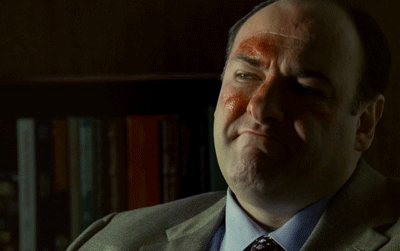Sho_Nuff82
Member
Posted this in the Japanese comfort girl thread, someone suggested I make a new topic.
Read this:
http://en.wikipedia.org/wiki/Lies_My_Teacher_Told_Me
Exerpt here: http://www.thirdworldtraveler.com/History/Hero-making_LMTTM.html
The except chapter contains bonus material on Woodrow Wilson, racist and imperialist, and Helen Keller, communist.
Read this:
http://en.wikipedia.org/wiki/Lies_My_Teacher_Told_Me
Exerpt here: http://www.thirdworldtraveler.com/History/Hero-making_LMTTM.html
Christopher Columbus introduced two phenomena that revolutionized race relations and transformed the modern world: the taking of land, wealth, and labor from indigenous peoples, leading to their near extermination, and the transatlantic slave trade, which created a racial underclass.
He ended his description of them with these menacing words: "I could conquer the whole of them with fifty men and govern them as I pleased."
On his first voyage, Columbus kidnapped some ten to twenty-five Indians and took them back with him to Spain. Only seven or eight of the Indians arrived alive, but along with the parrots, gold trinkets, and other exotica, they caused quite a stir in Seville. Ferdinand and Isabella provided Columbus with seventeen ships, 1,200 to 1,500 men, cannons, crossbows, guns, cavalry, and attack dogs for a second voyage.
When Columbus and his men returned to Haiti in 1493, they demanded food, gold, spun cotton-whatever the Indians had that they wanted, including sex with their women. To ensure cooperation, Columbus used punishment by example. When an Indian committed even a minor offense, the Spanish cut off his ears or nose. Disfigured, the person was sent back to his village as living evidence of the brutality the Spaniards were capable of.
"Since the Admiral perceived that daily the people of the land were taking up arms, ridiculous weapons in reality . . . he hastened to proceed to the country and disperse and subdue, by force of arms, the people of the entire island . . . For this he chose 200 foot soldiers and 20 cavalry, with many crossbows and small cannon, lances, and swords, and a still more terrible weapon against the Indians, in addition to the horses: this was 20 hunting dogs, who were turned loose and immediately tore the Indians apart." Naturally, the Spanish won. According to Kirkpatrick Sale, who quotes Ferdinand Columbus's biography of his father: "The soldiers mowed down dozens with point-blank volleys, loosed the dogs to rip open limbs and bellies, chased fleeing Indians into the bush to skewer them on sword and pike, and 'with God's aid soon gained a complete victory, killing many Indians and capturing others who were also killed.' "
Spaniards hunted Indians for sport and murdered them for dog food. Columbus, upset because he could not locate the gold he was certain was on the island, set up a tribute system. Ferdinand Columbus described how it worked: "[The Indians] all promised to pay tribute to the Catholic Sovereigns every three months, as follows: In the Cibao, where the gold mines were, every person of 14 years of age or upward was to pay a large hawk's bell of gold dust; all others were each to pay 25 pounds of cotton. Whenever an Indian delivered his tribute, he was to receive a brass or copper token which he must wear about his neck as proof that he had made his payment. Any Indian found without such a token was to be punished." With a fresh token, an Indian was safe for three months, much of which time would be devoted to collecting more gold. Columbus's son neglected to mention how the Spanish punished those whose tokens had expired: they cut off their hands.
Estimates of Haiti's pre-Columbian population range as high as 8,000,000 people.. When Christopher Columbus returned to Spain, he left his brother Bartholomew in charge of the island. Bartholomew took a census of Indian adults in 1496 and came up with 1,100,000. The Spanish did not count children under fourteen and could not count Arawaks who had escaped into the mountains. Kirkpatrick Sale estimates that a more accurate total would probably be in the neighborhood of 3,000,000. "By 1516," according to Benjamin Keen, "thanks to the sinister Indian slave trade and labor policies initiated by Columbus, only some 12,000 remained." Las Casas tells us that fewer than 200 Indians were alive in 1542. By 1555, they were all gone.
A particularly repellent aspect of the slave trade was sexual. As soon as the 1493 expedition got to the Caribbean, before it even reached Haiti, Columbus was rewarding his lieutenants with native women to rape. On Haiti, sex slaves were one more perquisite that the Spaniards enjoyed. Columbus wrote a friend in 1500, "A hundred castellanoes are as easily obtained for a woman as for a farm, and it is very general and there are plenty of dealers who go about looking for girls; those from nine to ten are now in demand."
The except chapter contains bonus material on Woodrow Wilson, racist and imperialist, and Helen Keller, communist.

